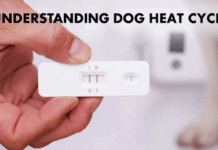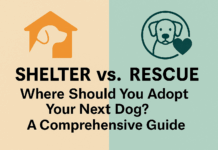Last Updated on August 2, 2022 by Dogs Vets
Proven Ways to Keep Your Dog Fit and Healthy
Dogs are a man’s best friend, and they have been for ages. But if you’re going to be their best friend too, then you need to know how to take care of them properly!
There are certain tips that your vet may give you to keep your dog’s weight down and their lifestyle healthy.
You’ll be able to find a lot of advice online too from other experienced dog owners, who might have some good advice – but always make sure to double-check if it really is a reliable source.
Is There Enough Water?
Dehydration is one of the major factors that can lead to obesity in pet dogs, so you should provide them with fresh water always available.
Whether they are playing or just being lazy on the sofa, always keep their water bowl close.
You might want to consider getting a water fountain for your dog so that it can drink whenever feeling thirsty rather than just when it’s over the side of the bowl! These fountains provide a convenient water source that also aerates the water with oxygen – so it tastes fresher and your dog can drink more frequently.
Freshly Made Food
If you are feeding your dog processed pet food, make sure to change it with some fresh, raw ingredients (meat and vegetables) every now and then.
The proportion of water for meat should be around 70% – so the food will stay fresh longer, but not too much. A good proportion is 5% of vegetables and 25% of raw meat and bones (chicken, turkey, beef).
For those who like to eat regularly at home, there’s also no problem in giving your dog the leftovers from the table – but make sure that what you’re offering isn’t too fatty or sugary. Your dog will love it if you don’t have the same table manners as them!
To decrease your dog’s chances of becoming obese, there are some ways to regulate their feeding habits.
A good technique is dividing the food into more portions and placing them throughout the day in small quantities so that they can get their daily dose of calories when they need it most.
Keeping It Active
Dogs love running around outside – not only because it gets their heart pumping (which is good for both dogs and humans), but also because they get lots of attention from people. Just make sure that you and your dog are doing it for the same reasons.
You might be running to lose weight or to keep fit, but they might be doing it because you’re telling them, or they might be wanting some attention from you or other people.
You also need to make sure they don’t overdo it either – use any signs of tiredness as an indicator that this is the time to stop running or exercising and head back home.
So what are you waiting for? Put on your jogging shoes and get out there with your furry friend! As you’ll see, both of you will benefit from it.
Toys Are For Fun Too
Get out all their favorite toys and play around together – doesn’t matter if it’s tug-of-war or fetches. And maybe you could play some music too while they’re at it! Other ways to play with your dog include taking them for walks (if their leash permits it), or training them to do some tricks!
Teach your dog a new trick every now and then – it doesn’t matter what, as long as they’re enjoying themselves and you’re getting some laughs in the process!
The process of learning new tricks is a great mental exercise for your pup and it itself will be more than exciting to learn, perform and show off in front of your friends, for example!
Mental Exercise
Just like people, dogs get bored very easily. If you don’t give them anything to do, they will create their own games – so if you don’t want your house to be destroyed in the process, it’s best to provide them with some toys and things to keep them busy.
A lot of pet owners try dog puzzle toys because they are an excellent way to maintain your dog’s mental health.
Dogs who are tired of chewing on the same old bone day in and day out will enjoy themselves if you provide them with a new challenge sometimes.

Dogs are special and loyal companions who will be there for you through thick or thin, and the least you can do is to keep your dog happy and healthy – whether that means providing plenty of exercise time outdoors or just a little mental stimulation with puzzle toys to keep their minds sharp!
Conclusion…
We hope you enjoyed this article… What are your thoughts on Proven Ways to Keep Your Dog in Fit and Healthy?
Please feel free to share with us in the comments section below.

















